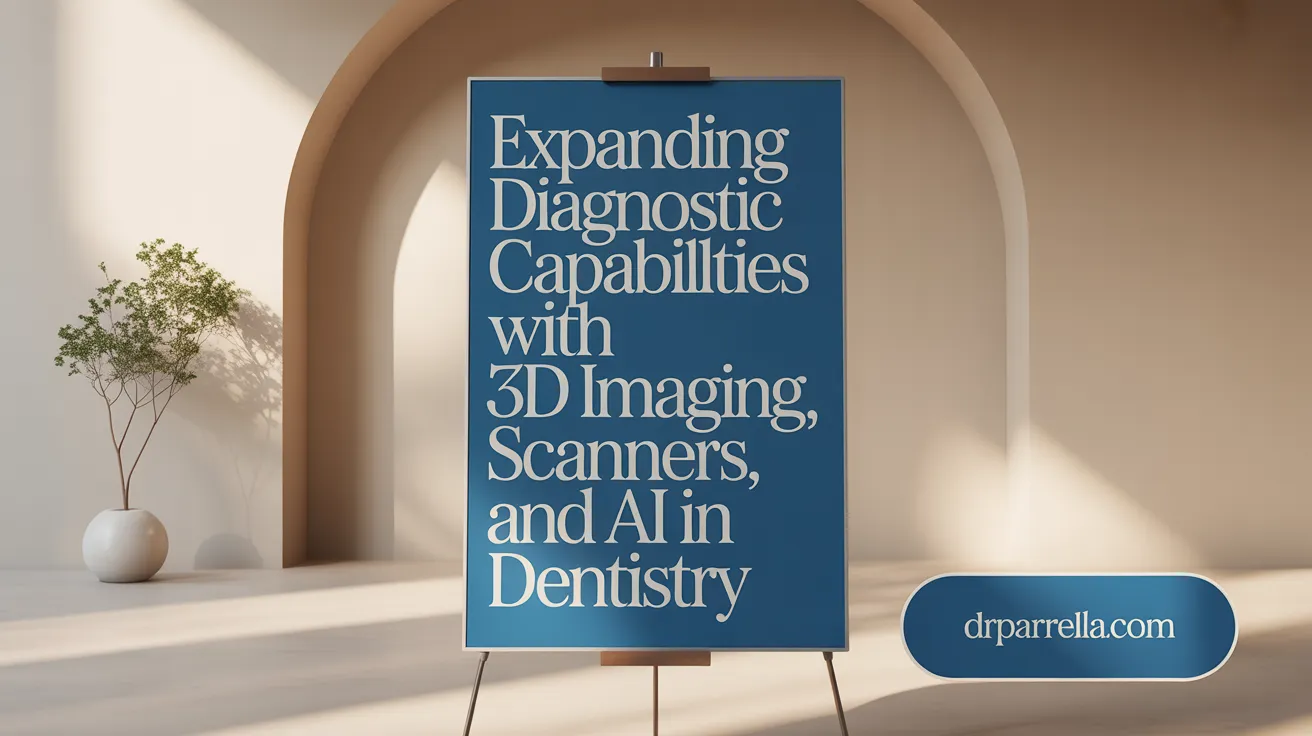Introduction to Digital X-Ray Technology in Dentistry
What Are Digital X-Rays?
Digital X-rays are an advanced dental imaging technology that uses electronic sensors instead of traditional film to capture images of your teeth and jaw instantly.
Why Digital X-Rays?
Unlike older film-based X-rays, digital systems produce high-resolution images that you and your dentist can view immediately on a computer screen. This allows for faster and more accurate diagnosis.
Patient Safety Benefits
One of the most important advantages is the significant reduction in radiation exposure—digital X-rays use about 70% to 90% less radiation compared to traditional X-rays. This makes them much safer, especially for frequent use and vulnerable patients such as children and pregnant women.
Enhanced Diagnostic Accuracy
The clear, magnifiable images help dental professionals identify early signs of cavities, gum disease, bone loss, and other issues that may be invisible during a regular examination. This early detection supports timely treatment, preserving your dental health.
By adopting digital X-ray technology, dental practices provide safer, faster, and more effective care tailored to the needs of local families.
Enhanced Diagnostic Accuracy and Immediate Results

How do digital sensors capture high-resolution images instantly?
Digital X-rays in dental diagnostics utilize advanced digital sensor technology in dentistry placed inside the patient's mouth to quickly capture detailed images of the teeth, gums, and jaw structures. These sensors are highly sensitive, transmitting the images instantly to a computer screen without the need for film development, allowing immediate review by dental professionals, enabling instant viewing of dental X-rays.
What is the role of image enlargement and enhancement in detection?
Once the digital image appears on the computer, dentists can enlarging digital X-ray images and enhance the picture, adjusting brightness and contrast to reveal subtle dental issues. This increased clarity helps to identify early signs of cavities, gum disease, and even tumors that might be missed during a visual exam or with traditional X-rays, demonstrated by the benefits of digital X-rays.
What variety of digital X-rays are available, and what are their purposes?
Several types of digital X-rays are used, each designed to highlight different aspects of oral health:
- Bitewing X-rays for cavities: Reveal cavities between teeth and help assess bone density.
- Periapical X-rays explained: Provide detailed views of individual teeth, including roots and surrounding bone.
- Panoramic X-rays overview: Capture a broad image of the entire mouth, including jaws and sinuses.
These tailored approaches support comprehensive examination and diagnosis.
How do digital X-rays aid early identification of dental issues?
The superior image quality and immediate availability enable dentists to detect problems early—before symptoms arise—such as tooth decay, gum disease, infections, and tumors. Early diagnosis means treatment can begin promptly, improving outcomes and preserving oral health as highlighted in early detection of dental problems.
Digital X-rays have transformed dental diagnostics by producing instant, high-resolution digital dental X-rays that can be magnified and enhanced, offering precise insights into oral health. With specialized X-ray types targeting specific diagnostic needs, dentists can catch and address dental conditions earlier and more effectively, leading to better treatment planning and patient care.
Significant Reduction in Radiation Exposure Enhancing Patient Safety

What safety advantages do digital X-rays offer patients?
Digital X-rays provide a major safety benefit by reducing radiation exposure by approximately 70-90% compared to traditional film-based X-rays. This significant reduction minimizes patient risk while still delivering high-quality diagnostic images. Despite the lower radiation, some exposure remains, but it is minimal and comparable to natural background radiation we encounter daily (Radiation reduction with digital X-rays, Digital X-ray radiation exposure).
Patient safety protocols and residual risk
Dental practices follow strict safety protocols to further protect patients. These include limiting the use of X-rays to situations where they will improve diagnosis or treatment, as well as spacing out X-ray sessions appropriately (Safety protocols for dental X-rays, Personalized X-ray schedules). Protective measures like lead aprons and thyroid collars have long been standard to block stray radiation, though recent guidelines from the ADA note that modern digital equipment and focused X-ray beams may reduce or eliminate the need for routine shielding (ADA updated radiography safety recommendations, Lead aprons and thyroid collars).
Special considerations for children and pregnant women
Children and pregnant women are especially vulnerable to radiation, so dental providers take extra care. X-rays are only performed when necessary for these groups (Safer Dental X-Rays for Children and Pregnant Women, Dental X-rays safety during pregnancy. For pregnant patients, dental X-rays are generally safe when needed but are avoided or postponed in the first trimester unless urgently required (Dental X-rays and pregnancy considerations, Dental X-rays safety during pregnancy. With children, protocols emphasize minimal exposure and comfort while ensuring early detection of oral issues (Benefits of digital dental X-rays).
Evolving use of protective gear
While lead aprons and thyroid collars have been standard for decades, newer digital X-ray technologies with precise beam collimation ensure that radiation is confined to targeted areas, reducing scatter. Because of this, the ADA has updated recommendations, stating that routine use of protective shields may not be necessary with modern X-ray machines (ADA updated radiography safety recommendations, Digital X-ray technology benefits). This evolution reflects advancements in technology ensuring patient safety during dental imaging (Digital X-rays in dental diagnostics).
Digital X-rays thus provide a safer, more efficient way to diagnose dental conditions, all while minimizing radiation risks through advanced technology and robust safety protocols (Advantages of Digital X-Rays, Safety of digital X-rays.
Efficiency, Environmental Benefits, and Improved Patient Experience

How do digital X-rays improve efficiency and patient experience?
Digital X-ray technology revolutionizes dental care by delivering images instantly on a computer screen during your appointment. This immediate availability allows dentists to diagnose issues and plan treatments without delay, making visits more efficient and convenient for patients.
Electronic storage of digital X-ray images simplifies record-keeping, allowing for quick sharing with other healthcare providers or insurance companies. This seamless communication helps coordinate care and supports better-informed treatment decisions.
Unlike traditional film X-rays, digital systems do not require chemical processing, which means no harmful waste is produced. This eliminates the need for chemicals used in developing X-ray films, making digital imaging an environmentally friendly option.
Patient comfort is also enhanced through the use of smaller digital sensors, which fit more comfortably in the mouth. Additionally, the improved clarity of images reduces the need for multiple retakes, minimizing discomfort and shortening appointment times.
Overall, digital X-rays provide safer, faster, and more pleasant experiences for dental patients while supporting sustainable practice standards.
Advanced Imaging Technologies Complementing Digital X-Rays

What advanced imaging technologies complement digital X-rays in dentistry?
Beyond digital X-rays, advanced imaging technologies play a vital role in comprehensive dental care. One prominent technology is 3D cone beam computed tomography (CBCT), which produces detailed three-dimensional scans of teeth, jaws, nerve pathways, and other facial structures. This level of detail is invaluable for complex procedures like dental implants, orthodontics, and evaluation of jaw disorders, providing clear visualization that traditional X-rays cannot match.
Intraoral scanners have revolutionized the way dental impressions are taken. They replace uncomfortable traditional molds with digital scans that are faster, more precise, and more comfortable for patients. These digital models are highly accurate for planning restorations and orthodontic treatments.
To further enhance treatment precision, 3D printing technology is used to create custom surgical guides, dental models, and appliances. These printed tools increase the accuracy of implant placements and other dental interventions, streamlining procedures and improving patient outcomes.
Emerging AI platforms in dental diagnostics assist dental professionals by analyzing digital images quickly and accurately. AI tools can identify a broad spectrum of dental conditions, such as cavities, infections, and bone abnormalities, supporting dentists in making more informed diagnoses and treatment plans.
Together, these advanced imaging technologies complement digital X-rays by providing richer diagnostic information, improving treatment accuracy, increasing patient comfort, and allowing more personalized dental care.
Community-Focused Personalized Care Through Technology Adoption
How do family-run dental practices utilize digital X-rays to enhance patient care?
Family-run dental practices in Somerville, MA, such as Smiles of West Point and Khanani Family Dental, exemplify how digital X-rays in dental diagnostics elevate personalized dental care.
These practices integrate digital X-ray technology to obtain immediate, high-resolution images during routine exams, facilitating early detection of cavities, gum disease, and other oral health issues. The ability to enlarge images on-screen enhances diagnosis accuracy and allows dentists to explain findings clearly to patients.
Digital X-rays reduce radiation exposure by up to 90%, reassuring patients about safety while enabling practices to monitor oral health efficiently. Special precautions are taken for sensitive groups like pregnant women to maintain safety without compromising care quality.
Emphasis on patient-centered care and communication
Smiles of West Point and similar local practices prioritize transparent communication about the advantages and risks of digital radiography safety protocols. By educating patients on radiation reduction, environmental benefits of digital X-rays, and diagnostic improvements, they foster trust and comfort.
This patient-centered approach extends to discussing treatment plans supported by digital imaging, empowering patients to make informed decisions and engage actively in their dental health.
Balancing technology with personalized dental health strategies
These dental offices blend cutting-edge digital imaging with individualized care tactics such as personalized sealant applications and fluoride treatments. Digital X-rays help identify areas needing preventive measures, enabling tailored interventions to protect and strengthen teeth specific to each patient's needs.
This balance ensures technology enhances, rather than replaces, the compassionate, customized dental care essential for long-term oral health.
Importance of preventive care supported by digital imaging
Routine use of digital X-rays guides timely preventive care, detecting early-stage problems invisible to the naked eye. This proactive strategy helps avoid more invasive and costly treatments later.
By integrating digital diagnostics with prevention-focused services, Somerville dental practices support healthier smiles across community families, underscoring the synergy between modern technology and attentive, preventive dentistry.
Looking Ahead: The Future Impact of Digital X-Rays in Dentistry
Ongoing advancements in digital imaging
Digital X-rays continue to evolve with improvements in sensor technology and software that enhance image clarity and diagnostic precision. These advancements make it easier to detect dental issues at earlier stages, ultimately improving patient outcomes.
Potential of AI and 3D imaging to further revolutionize care
Artificial intelligence (AI) is being integrated into dental diagnostics to assist with faster and more accurate interpretation of X-rays. Meanwhile, 3D imaging technologies like cone beam computed tomography (CBCT) provide detailed three-dimensional views of teeth, bone, and soft tissues, supporting complex treatments such as implants and orthodontics.
Continued focus on safety, efficiency, and patient comfort
The future of digital dental imaging emphasizes minimizing radiation exposure, reducing procedure times, and enhancing comfort through smaller sensors and less invasive imaging techniques. Practices remain committed to using digital X-rays judiciously to balance patient safety with the benefits of advanced diagnostics.
